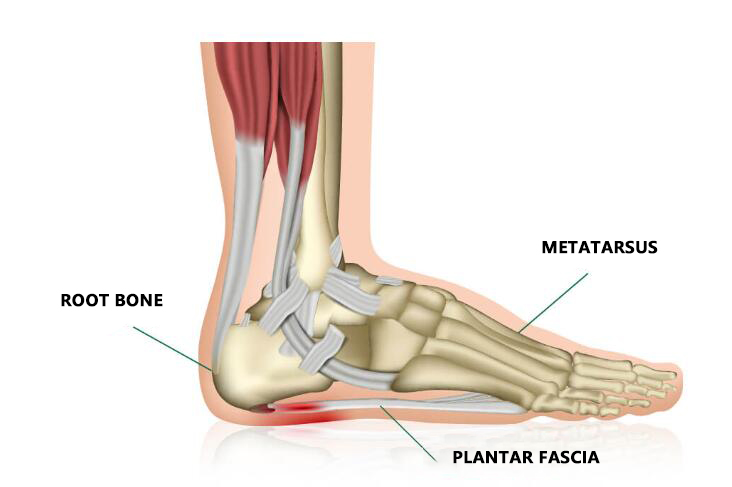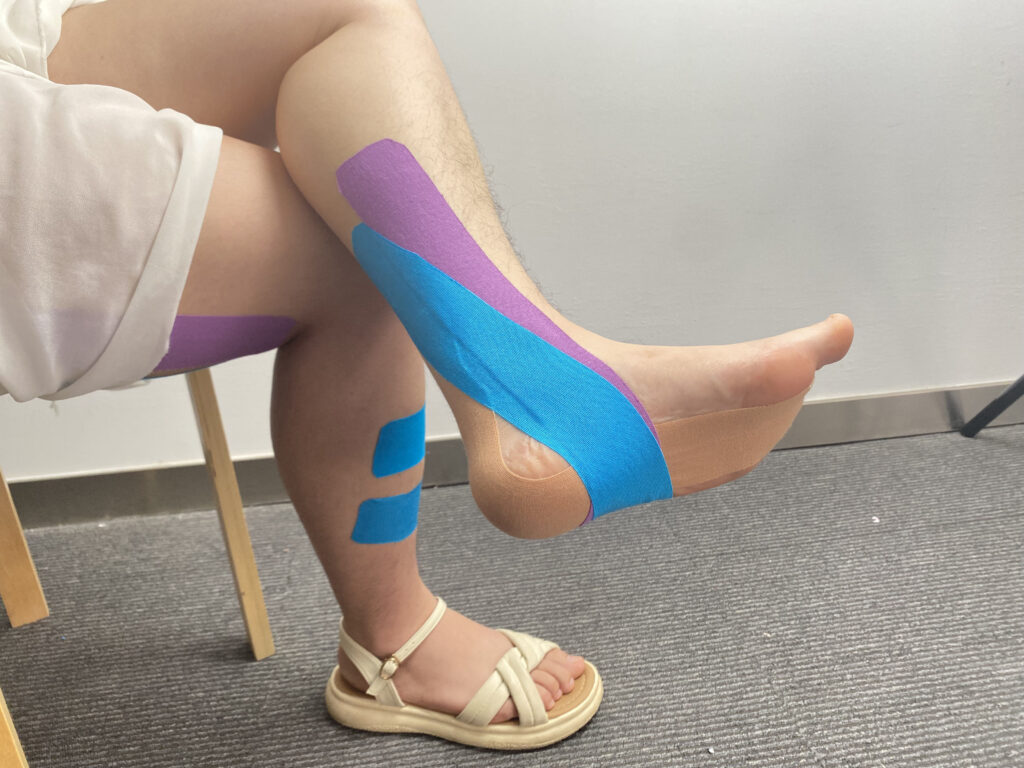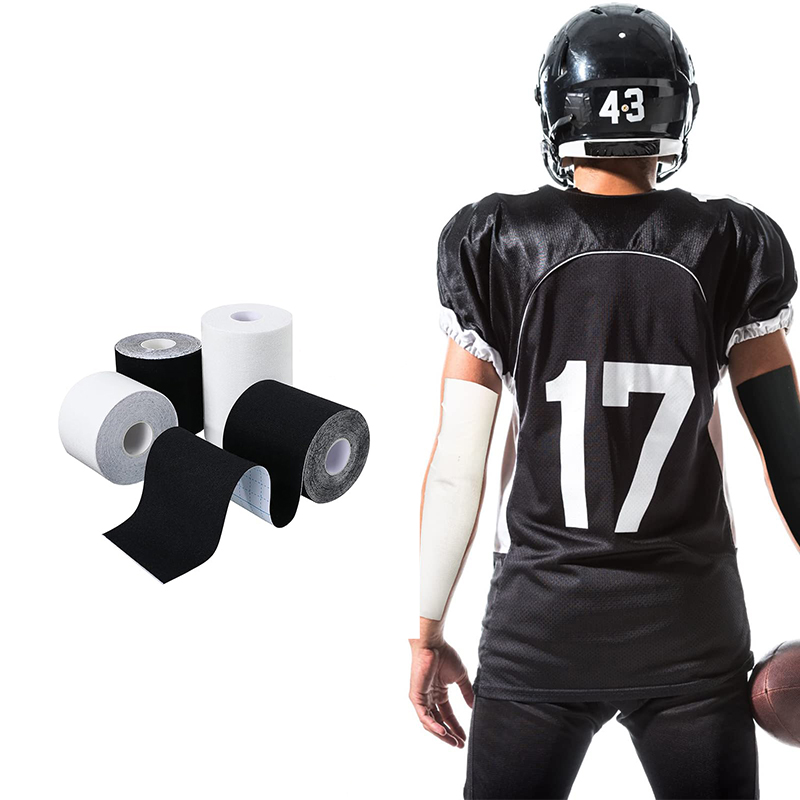Using kinesiology tape for plantar fasciitis to treat plantar fasciitis, you first need to understand what plantar fasciitis is. The plantar fascia is a fan-shaped fascia tissue that extends from the root of the toe to the inside of the heel. When we walk or stand, our feet need to bear the whole body At this time, the plantar fascia will provide part of the torsion and elasticity and absorb the reaction force of the ground.
If the running exercise is overtrained, prolonged overloading or jumping and dancing. Those who pronate (roll up on their feet), are overweight, wear old or improperly fitting shoes, and have an abnormal foot structure are at greater risk of developing plantar fasciitis, which is called “plantar fasciitis.” People with plantar fasciitis may experience pain on the bottom of the foot, around the arch, or the heel. The most common location is a pain in the middle of the bottom of the foot and the inner side of the heel. If you have the following symptoms, you are likely to suffer from plantar fasciitis.

1. When you get up and land on the ground, you will feel tingling pain on the soles of your feet
2. After standing or walking for a long time, the pain intensifies
3. Red, swollen and burning feet
4. The symptoms of foot pain are relieved when doing exercise and will recur when resting
5. When the foot is flat on the ground, it is difficult to lift the forefoot

At this time, you can use kinesiology tape for plantar fasciitis on your feet to better support your arch and reduce the pain and pressure on the plantar fascia. Here is a good way to use it. Prepare three pieces that are suitable for you For foot-length kinesiology tape for plantar fasciitis, it is recommended that you cut the right-angled side of the tape into rounded corners to reduce friction and prevent it from falling off. Of course, there are more labor-saving pre-cut tapes, which can save you the time of trimming, for details Please see the video below.

which is the best kinesiology tape
We can’t rate this as the best tape because you’re using more than one type of tape. There are also many brands of tape. It can only be said that there are good and bad, not absolute. We can only get our own conclusions by using and feeling it ourselves. Of course, we will buy things of good quality. Here we recommend a tape with a good reputation, which is the kinesiology tape for plantar fasciitis produced by Aupcon company. , why recommend this to you, because this is the result of many people in many countries using it, and it has received a lot of praise.
The tape itself is also inseparable from the kinesiology tape manufacturer. Aupcon has gone through more than ten years since its establishment. After years of experience, there is no need to doubt the quality and effect of the products brought to us. There are also many types of kinesiology tape. Since there are so many types, there are, of course, many colors, and we also support custom kinesiology tape services.
As long as you provide us with a plan, we will give you a satisfactory result. If you are still not at ease about the product, we are here to provide samples. The service can give you the most authentic experience to the greatest extent, and you will be more at ease when you come back to buy.
is athletic tape the same as kinesiology tape
The two tapes are not the same. Many times, people cannot tell the difference between kinesiology tape and athletic tape. Although they look similar, the two types of tape actually do exactly the opposite. In fact, athletic tape should only be used if you want to restrict movement; it’s all cotton, slightly thicker than leather strips, non-elastic, and is usually used to wrap an area tightly. While it can also support your joints, it’s only suitable for short-term use. The type of compression this tape uses actually restricts blood and lymphatic circulation.
Kinesiology Tape vs Use of Athletic Tape
The kinesiology tape is waterproof, so it can even withstand showers and other moisture exposure. It’s strong enough that you can use the same tape for three to five days without irritating the skin or underlying structure. Kinesiology tape allows you to maintain a normal range of motion while still providing support.
In contrast, athletic tape should only be applied before exercising and removed immediately after exercising to ensure no further damage to the area. It’s not very waterproof, the accumulated moisture can irritate the skin if left on too long, and the adhesive itself is sticky enough to cause irritation – so sticking athletic tape to the skin is not recommended, foam cotton is usually recommended as an aid.
How kinesiology tape for plantar fasciitis Works
Muscle tape works in a completely different way than athletic tape does. When muscle tape is applied to an area, it lifts your skin slightly, creating a micro space in the joint or under the skin. The conclusion is that duct tape changes the way your body processes information about pain in the sensory nervous system.
Some other benefits of muscle tape are that it can enhance movement and endurance, train weak muscles, and even retrain muscles that are accustomed to poor posture or movement. Muscle tapes are often used in conjunction with other treatments, such as physical therapy, massage, and more. Tape can be applied in an X, Y, I, or fan pattern, each with a different effect. So the two tapes are not the same.

why does kinesiology tape work
Kinesiology tape is a treatment used to help relieve plantar fasciitis. The main benefits of using kinesiology tape for plantar fasciitis include:
- reduce pain
2. Relieves pressure on your plantar fascia
3. The natural arches that support your feet
4. Stimulates muscles around the foot for more support
By using kinesiology tape for plantar fasciitis on your feet, your arches will be better supported and pain and pressure on the plantar fascia will be reduced. Helps restore normal walking and running. So tape is very effective for plantar fasciitis.
If you are interested in using tape on the ankle or sole of the heel, you can continue to explore how to use kinesiology tape to treat medical conditions.



